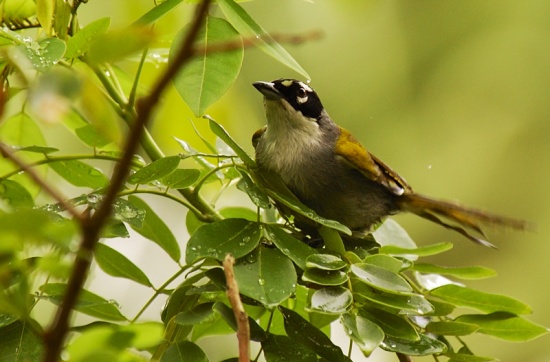Alternative name: Black-crowned Tanager
- Phaenicophilus palmarum
Identification
Yellow-green upperparts with grey nape, underside pale grey with whitish throat and upper breast. Head has black on crown and sides with three white spots above, below, and in front of eye.
Similar species
Gray-crowned Palm-Tanager is essentially limited to Haiti -- but where there is overlap, notice that juvenile Black-crowned can look more grey-crowned than adults.
Distribution
Dominican Republic and Haiti.
Taxonomy
This is a monotypic species[1].
Habitat
A variety of habitats as long as trees are present. Found from sea level to at least 2000 m and more rarely even higher.
Behaviour
Breeding
Known nesting happened between February and July, but may be breeding year round. Nest is cup-shaped and placed on average 2-4 meters above ground.
Vocalisation
Call is usually nasal with some variation, but also able to give pleasant song.
References
- Clements, J. F., T. S. Schulenberg, M. J. Iliff, B.L. Sullivan, C. L. Wood, and D. Roberson. 2013. The eBird/Clements checklist of birds of the world: Version 6.8., with updates to August 2013. Downloaded from http://www.birds.cornell.edu/clementschecklist/download/
Recommended Citation
- BirdForum Opus contributors. (2025) Black-crowned Palm Tanager. In: BirdForum, the forum for wild birds and birding. Retrieved 6 April 2025 from https://www.birdforum.net/opus/Black-crowned_Palm_Tanager
External Links
GSearch checked for 2020 platform.





